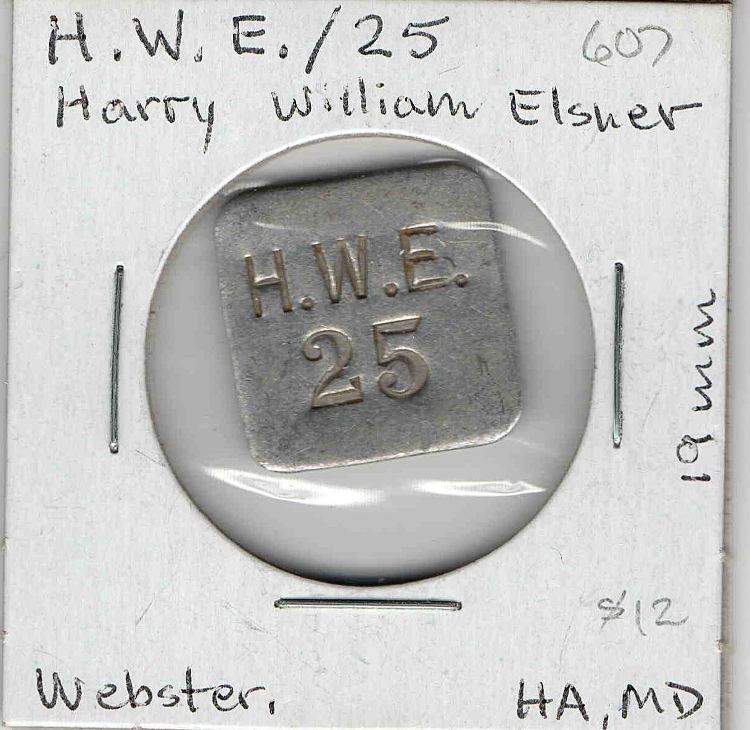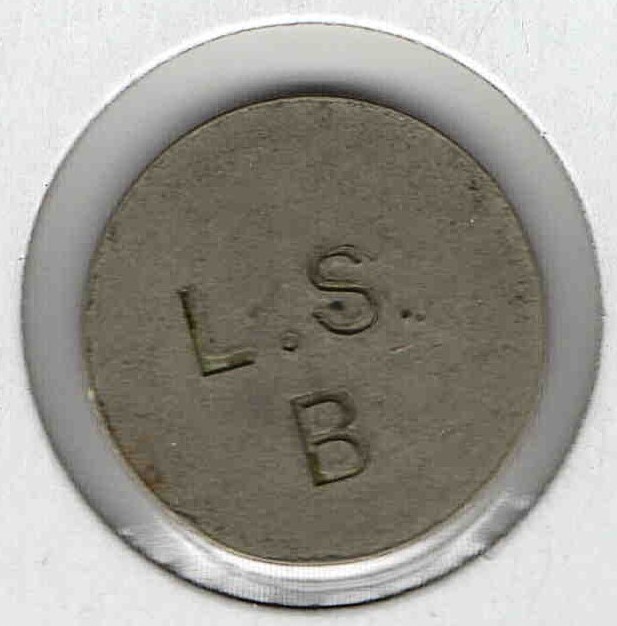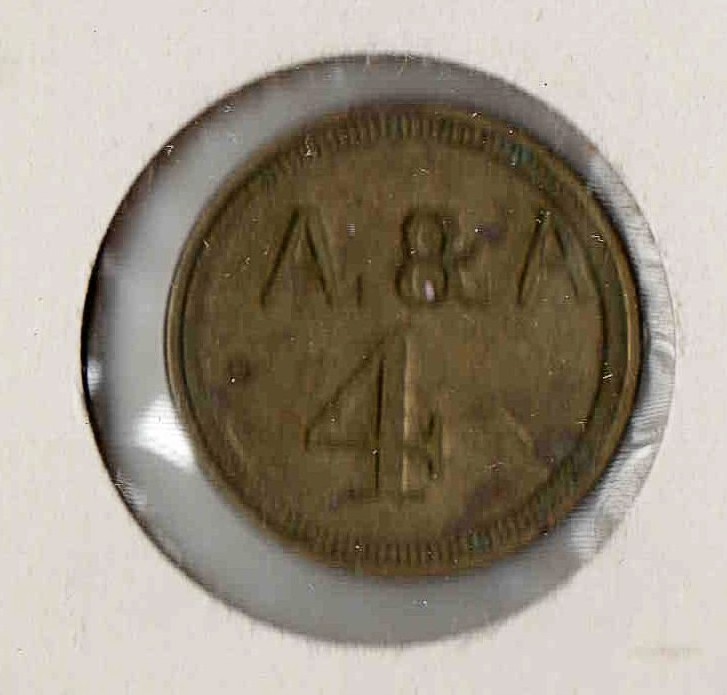The featured image is a merchant token “good for 5¢ in trade” used as a promotion for stores. Read on about how they used canning and merchant tokens in Havre de Grace.
Maryland Tokens
In this episode, we continue discussing the canning industry focusing on how they used tokens. George, our casual historian, met the author of Maryland Merchant Tokens, David E. Schenkman. As a result, he learned about token collections and was able to acquire a number of books for sale in Bahoukas Antique Mall.

The section of the book on Havre de Grace tokens mentions one for Sno-White Milk Bar. If any of our followers have any memorabilia regarding this business, please come talk with George. Of course, any Havre de Grace history stories and memorabilia are of interest to him.

especially one for Sno-White Milk Bar.
A few photos of Havre de Grace tokens:



How A Token Converted to Cash or Product
Tokens came in many shapes and sizes, usually of brass. The initials on them represented the canning company. A worker could take his tokens to the company and get cash – U.S. currency. But he could also use them at any merchant in Havre de Grace and Harford County to purchase goods. At the end of 2 weeks or once a month, the cannery owners would go around to the merchants, collect the tokens, reimburse the shop owner, and put the tokens back into circulation. We share this amazing information from HarfordTV’s Historic Harford with Joe Swisher program.
https://hcn.viebit.com/player.php?hash=BbxV1jOzHH5z
The above video link is Joe’s interview with Bernie Bodt and is very informative. Do take the time to watch. Then plan a trip to Steppingstone Museum this summer and visit the canning exhibit where you can see canning labels and tokens, but even more importantly, you can view how the machinery and learn how the production line worked. Definitely worth the trip!



Before Coakley’s Pub Next Door, it was Susquehanna Station. While digging out the foundation, they found these tokens from Borrell’s. Well, before Susquehanna Station, it was Tim’s Tavern. And before Tim’s, it was Harry Borrell’s – Pop Borrell’s Pool Hall!
The Hatem Collection in our History MuZeum at Bahoukas also had tokens in the machines. George found this one and several others:

In this brief post, we hope we’ve made you curious about Havre de Grace canning and merchant tokens. They came in many shapes and sizes and were used for both payment (in the canneries) and trading for products and services.
So when you’re digging around your home or business or renovating a building, keep an eye out for tokens.
Our ‘casual historian’ is always waiting for your stories and any memorabilia you may want to share.
Remember, don’t throw the Havre de Grace ‘stuff’ out when you’re cleaning out a home, settling an estate, or just ‘downsizing,’ without checking in with George. Don’t give him cause to cry!!!
Please SHARE these posts and SUBSCRIBE to his youtube channel.

